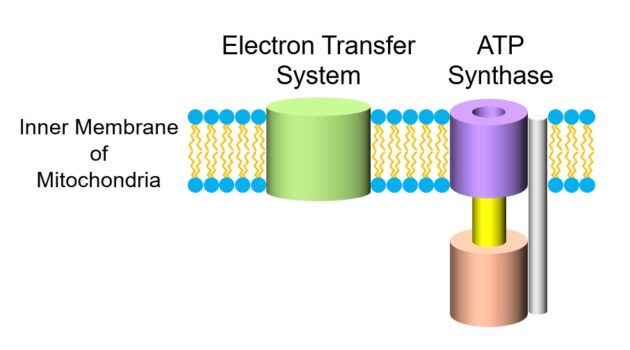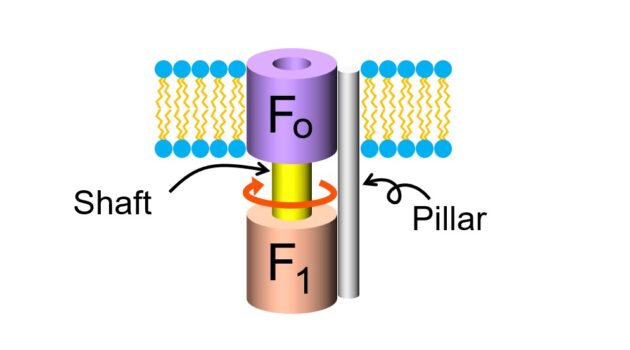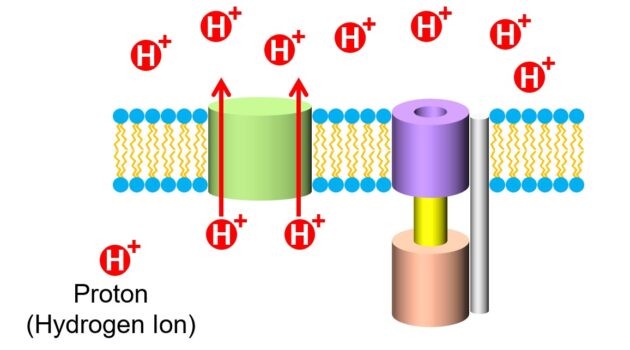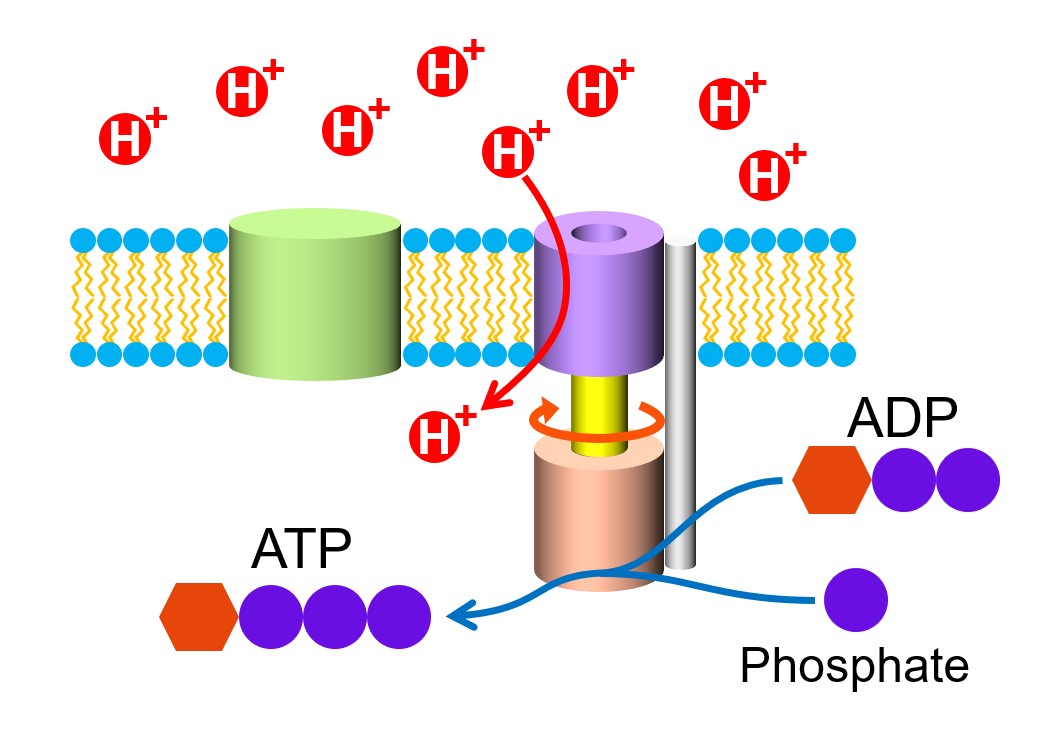ATP is the energy source for cells.
In this post, I will try to explain very simply how ATP is produced in cells.
Textbooks often describe the mechanism of ATP production in cells in a very complicated way.
I don’t think it’s unreasonable.
Many proteins bind together to form large complexes, and multiple complexes form the mechanism for producing ATP. If we write in detail about this incredible mechanism, it is no surprise that it becomes a complex story.
But the essence of this mechanism is very simple.
How about this analogy below?
- The engine drives a pump to pump the water up to a higher place.
- The pumped up water falls from a higher place and rotates the water wheel.
- The water wheel drives the generator to generate electricity.
What does this analogy mean?
Let’s see a little bit more.
Eukaryotic cells have mitochondria.
Mitochondria make ATP.
Mitochondria have an outer membrane and an inner membrane.
The ATP generators are on the inner membrane.
Looking more closely, the ATP generator on the inner membrane consists of the “Electron Transfer System” and the “ATP Synthase“.

Look at the diagram above!
The shape of the ATP synthase is very interesting, isn’t it?
It’ s even mysterious…

ATP synthase has two parts.
That is, Fo (F O) and F1 (F One).
Fo is embedded in the inner membrane.
Both Fo and F1 have a tube-like shape.
And they are connected by a “Shaft”.
In addition, Fo and F1 are also attached to a “Pillar” on their outside.
Let’s imagine!
When Fo rotates the shaft with force, then the shaft rotates inside F1.
And actually, F1 is the main unit of the ATP generator.
How does this mechanism work?
Let’s see step by step.
First, the electron transfer system pumps protons (hydrogen ions) from the inside of the membrane to the outside, using the energy gained from food.

Then, since there are more protons on the outside of the membrane, a pressure is created for the protons to enter the inside of the membrane.
This is similar to how pumping water to a higher place creates pressure for the water to fall to a lower place.
Protons tend to go through the membrane from the outside to the inside.
But the membrane doesn’t allow protons to go through…
But no problem!
There’s a loophole!
Fo is a tunnel for the proton to go through the membrane.

The energy of the proton passing through Fo causes the shaft to rotate.
The rotation of the shaft is transmitted to F1.
When the shaft rotates in F1, ATP is produced by the energy of the rotation.
Let’s see at the three-step analogy again.
- The engine drives a pump to pump the water up to a higher place.
- The pumped up water falls from a higher place and rotates the water wheel.
- The water wheel drives the generator to generate electricity.
Let’s replace these three steps with what is actually happening in the mitochondria.
- The electron transfer system is a device that combines an engine and a pump. The energy of gasoline exploding in the engine is equivalent to the “energy obtained from food (glucose)” in the electron transfer system. And just as an engine pumps water, the electron transfer system pumps protons from the inside of the membrane to the outside.
- Just as water pumped to a high place falls to a lower place, protons pumped out of the membrane tend to flow into the membrane. The falling water turns the waterwheel and the incoming protons turn the shaft inside the Fo.
- F1 synthesizes ATP using the rotation of the shaft as an energy source, just as a water wheel uses its power to turn a generator to produce electricity.
The ATP produced is then distributed to every part of the cell as a source of energy for various life activities.
This is similar to how electricity produced in a power plant is distributed throughout the city through the power lines.
How about the explanation above?
This is the way the “power plant” works inside of us.
Bacteria, jellyfish, sunflowers, crickets, and giraffes all use this mechanism to produce ATP, which they use as an energy source to live.
“What an elaborate system! Did you think?
If you thought, “What a roundabout system!”, then you’re pretty smart.
How could you use an engine to pump up water, use the falling water to rotate a waterwheel, and then use that rotation to turn a generator to generate electricity!
Why don’t you just use the engine to drive the generator directly! In other words, if the electron-transfer system can pump protons out of the membrane with energy obtained from food, why not use that energy to make ATP directly!
Why does the mechanism of ATP production have to be so roundabout?
Shouldn’t living things waste nothing?